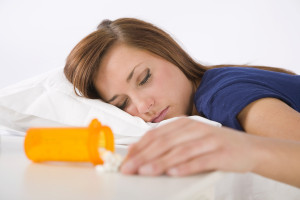Category: News Tags: , teen prescription drug abuse
 In a study of emergency room visits by teens and young adults, researchers at the University of Michigan found that more than 10 percent of them had abused an opioid or sedative medication.
In a study of emergency room visits by teens and young adults, researchers at the University of Michigan found that more than 10 percent of them had abused an opioid or sedative medication.
Prescription drug abuse is a relatively rare but notable phenomenon among older teenagers and younger adults. People who abuse prescription substances can end up seeking treatment in an emergency room for a number of reasons. In a study reported in 2014 in the American Academy of Pediatrics journal AAP Grand Rounds, researchers investigated how often teenagers in U.S. emergency rooms are nonmedical consumers of two widely used classes of medication: opioid painkillers and sedatives. These researchers also looked at some of the factors that make it more likely that a teenager who abuses one of these medications will end up in an ER.
Prescription Drug Abuse
Prescription drug abuse is one of the terms commonly used to identify the misuse of a medication normally prescribed by a doctor to meet specific treatment needs. Another common term for the same practice is prescription medication abuse. Medication misuse can occur when a person with a legitimately issued prescription for a medication starts taking more of that medication than directed. It can also occur when a person without a legitimate prescription starts consuming a medication without proper authorization. For some people, the underlying motivation for beginning a pattern of medication abuse is purely recreational and linked to a desire to get “high.” However, some people start abusing a prescribed medication out of a misguided desire to gain an increased level of relief from their mental or physical health problems. The four medication types most subject to abuse are opioid painkillers, sedative-hypnotics classified as tranquilizers, stimulants that contain amphetamine or other active ingredients and sedative-hypnotics classified as sedatives.
Teens and Prescription Abuse
The National Institute on Drug Abuse uses an annual survey called Monitoring the Future to track prescription medication abuse rates among America’s teenagers. Most of the survey’s prescription medication-related findings focus on 12th graders, who typically have a higher chance of abusing any given substance than younger teens. In 2013, 7 percent of the nation’s 12th graders abused at least one type of prescription medication in the average month. Misused medications popular among 12th graders include the ADHD treatments Ritalin and Adderall, the opioid painkillers Vicodin and OxyContin, sedative-hypnotics classified as tranquilizers and sedative-hypnotics classified as sedatives.
Emergency Room Visits
In the study reported in AAP Grand Rounds, the University of Michigan researchers used data gathered from 2,135 teenagers and young adults between the ages of 14 and 20 to help determine how often prescription drug abusers in these two age groups end up receiving treatment in an emergency room (for their substance use or for any other reason). Specifically, the researchers focused on the ER visits of teens and young adults who abuse an opioid medication or a sedative medication. The study participants had an average age between 17 and 18. Each participant filled out questionnaires that elicited details of his or her level of involvement in prescription drug misuse over the course of the previous year. In addition, each participant answered questions on such topics as general demographic background (age, gender, racial/ethnic background, etc.), consumption of marijuana and alcohol, exposure to dating violence and level of involvement in drunk driving.
Just over 10 percent (224) of the study participants identified themselves as abusers of prescription opioids or prescription sedatives. Less than 15 percent of the opioid medication abusers had a prescription; in addition, less than 13 percent of the sedative medication abusers had a prescription. The researchers concluded that, apart from various demographic factors, three factors were associated with ER visits among teens and young adults who abuse an opioid medication or sedative medication: consuming some other type of substance in the previous year, driving while drunk and riding with a drunk driver. They also concluded that teens and young adults who only abuse prescription opioids and end up in the ER are statistically more likely to receive an IV dose of an opioid while in the emergency room. In addition, the researchers linked the isolated abuse of sedative medications to being physically injured at the time of ER treatment, having visited the ER at least once before in the previous 365 days and being involved in dating violence in the previous 365 days.